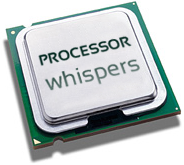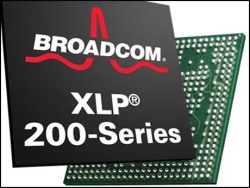Processor Whispers: About aureate chips and fiery paths
 by Andreas Stiller
by Andreas Stiller
The fireworks display in Las Vegas at the beginning of the new year was relatively quiet: Samsung, LG and Intel pulled party poppers instead of lighting firecrackers. NVIDIA and AMD produced a bit more noise, and Broadcom and MIPS managed to draw attention.
As assumed in the last issue of Processor Whispers, NVIDIA lit up its sparkler Wayne, alias Tegra 4. However, the company also surprised with its own gaming console, but many things still remain nebulous, like what game content it will have and how does it play. AMD introduced a new APU, called Temash, for the next tablet generation and, finally, presented its initial client for the current tablet chip Hondo (Z-60).
Also, after numerous departures, AMD announced a new sales manager for GPUs and APUs. Theo Valich of Brightsideofnews had known about this for quite some time as, Roy Taylor, who is well-known in the business, was one of his contributors.
For a long time, Taylor had helped to steer the dealings at NVIDIA and had drawn attention with his loudly proclaimed credo: "the CPU is dead, the future belongs to the GPU". Well, at AMD, he can now act in accordance with his beliefs and declare the death of the Phenoms and Opterons; most of the experienced AMD developers that had been on board have already left anyway. Michael Goddard, for instance, who had had a hand in AMD's processor affairs as architect and chief architect for almost 25 years, left shortly before the turn of the year, which surely didn't please the company.
As far back as the 80s, Goddard worked together with Mike Johnson, who had designed the, at that time, rather popular RISC processor AMD29K; however, the team had little success with the following x86 design K5 – AMD preferred to buy the K6 including the developers and managers from NexGen. Later, Goddard worked with Dirk Meyer, who had moved to AMD from DEC and later became AMD's CEO, on the successful Athlon (K7). The unlucky Johnson, in contrast, was sent away to AMD's Flash memory subsidiary, from where he left for a position in the research and development department of Texas Instruments. Today, he writes C++ code at home for his small software company.
Apart from TI, Intel, Apple, ARM and primarily Samsung are also present in Austin to poach experienced AMD developers. As is well-known, Samsung is best at this (after all, Apple hasn't released the iPoach yet) – and so Goddard, like many of his colleagues, now works at Samsung's expanding R&D centre – where, by the way, Ex-AMD server boss Pat Patla, who abandoned AMD in spring 2012, is leading the department.
Broad Ways to MIPS
So, what is the link now between AMD in Austin and Broadcom in Irvine? Well, Broadcom also operates a large development centre in the Texan capital, but that would be too simple. There is a more interesting connection: in Austin there lives and works the legendary processor designer Ty Garibay. He came to people's attention as chief architect of Cyrix (x86) and later went down in the processor development annals of Texas Instruments as the father of OMAP (ARM). Today, he is VP at Altera but in between, at the end of the 90s, he founded his own processor company, called Alchemy Semiconductor. The aureate processors Au15xx based on energy-saving MIPS cores were meant for the tablets of those times. In 2002, the company was rather unexpectedly acquired by AMD – probably as some kind of countermeasure against Intel's experiments with StrongARM. But just like Intel with StrongARM, AMD didn't really know what to do with Alchemy, after all, they didn't want these chips to become competitors for their own x86 children.
And so AMD sold the troublemakers again in 2006. The buyer was Atiq Raza, who had left AMD in summer 1999, a few days before the K7 launch, following a fierce argument – at this point, he had been no less than AMD's COO, CTO, president and presumed heir to the company's CEO throne. Two years after the acquisition, he sold his company RMI Corporation, including the Alchemy processors, for around $180 million to Netlogic. And in September 2011, Netlogic was bought by – drumroll – Broadcom. Under their new master, the Alchemy chips are supposed to be cranked up as communication processors (XLP II): at first with two MIPS cores (XLP 200, up to 8 threads, 2GHz clock speed, 8 x GbE, 1 x 10GbE, PCIe 3.0) and eventually with up to 20 cores inside the XLP 980, all manufactured in the most advanced 28nm process. And while ARM's 64-bits offering are a long time coming, MIPS has been providing 64-bits as part of the basic configuration for two decades now.

The descendants of the Alchemy Au1550 processors are supposed to shake up the processor market in the second half of 2013, with multiple MIPS cores, Gigabit Ethernet controllers and PCIe 3.0
So the MIPS architecture is quite alive and, actually, especially popular in China. That's true for Chinese server processors and also for the engine rooms of tablets – after all, the MIPS architecture is fully supported by Google's Android 4.1. And so, at CES, the Ingenic Semiconductor company from Beijing showed off a tablet with a proprietary dual-core SoC, the JZ-4780, fittingly equipped with PowerVR-SGX5 graphics from the new MIPS owner Imagination.
Broadcom will also have to come to an arrangement with the British design company – but the Californians are well-positioned in any case, they have far-reaching ARM licences and they are very successful at selling SoCs with ARM for smartphones and other devices in the embedded world. In addition, Broadcom has its own 64-bit processor line, FirePath, up its sleeve – designed by ARM creator Sophie Wilson.
At CES, a multitude of Broadcom's designs were present inside (Ultra HD) TVs (such as LG with 5G Wi-Fi), set-top boxes, gateways and so on. The new XLP 200 processors were not on display; samples are already being provided, however, and mass production is planned for the second half of the year.
While the Broadcom chips don't draw much public attention, a turnover growth of 8.8 per cent in the last year makes the company one of the outright winners of the semiconductor business, and with $7.8 billion of annual turnover the company also managed to snatch away ninth place from Micron.
Only semiconductor star Qualcomm announced an even higher turnover increase of 30 per cent and, with roughly $13 billion of turnover, took third place behind Intel ($49.3 billion) and Samsung Electronics ($25 billion). Both the market leaders, like all the others in the top 10 (TI, Toshiba, Renesas, STMicroelectronics ...), suffered some significant losses.
Broadcom is particularly proud of its numerous patents and the high technology strength ranking for the semiconductor industry that the Wall Street Journal has assigned it based upon those patents. Last year, Broadcom took second place, below Samsung Electronics and above Intel. As for the sheer number of US patents granted across all industries during the last year, IBM again stands out with around 6440 patents granted, followed by Samsung with 5440 and Sony (inclusive of Sony Mobile and Sony Computer Entertainment) with about 3770.
(djwm)




![Kernel Log: Coming in 3.10 (Part 3) [--] Infrastructure](/imgs/43/1/0/4/2/6/7/2/comingin310_4_kicker-4977194bfb0de0d7.png)

![Kernel Log: Coming in 3.10 (Part 3) [--] Infrastructure](/imgs/43/1/0/4/2/3/2/3/comingin310_3_kicker-151cd7b9e9660f05.png)












